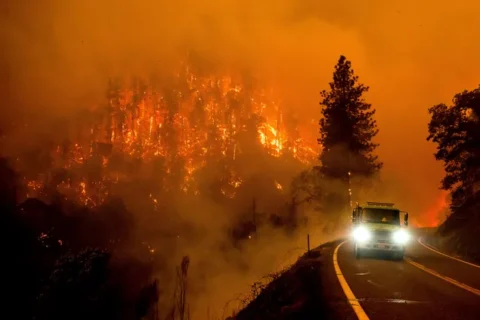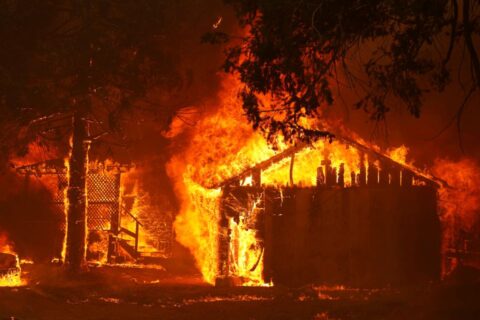Massive Dixie Fire in Northern California Tied to Rotted Tree
The Dixie Fire, which has burned more than 900,000 acres, began in mid-July after a Douglas fir fell onto a PG&E line in the Feather River Canyon
A PG&E arborist has acknowledged the tree that fell onto a powerline and is suspected of starting the Dixie Fire, showed signs of rot – a finding that came as no surprise to one expert tracking the worsening epidemic of fungal disease in the densely-forested, drought-ravaged Sierra.
The Dixie Fire, which has burned more than 900,000 acres, began in mid-July after a Douglas fir fell onto a PG&E line in the Feather River Canyon. The 70-foot tall tree seemed healthy, the utility has said, but last week an unidentified arborist for the utility reviewed photos of the tree and found signs of at least one rotted root at the base.
Matteo Garbelotto, a UC Berkeley forest pathologist, has been tracking the epidemic of the fungus that causes rot in the Sierra Nevada and other western ranges over the last 25 years.
“It’s not that much different from COVID,” he said, “but instead of infecting people, it’s a disease that infects trees by infecting the wood.”
Garbelotto says the fungal disease that leads to rot can spread quickly because the Sierra forest is overgrown and has not been thinned by man or wildfire in decades.
“When you have a dense forest, what happens is the distance between one tree and the next tree is very small,’’ Garbelotto said. That leads to a lack of “social distancing” — the same phenomenon scientists refer to as a factor in the spread of COVID-19.
“I’ve been teaching this for 30 years,’’ he said. “It’s interesting that people are aware now of social distancing because of what’s happening to humans.”
The deepening drought, he says, is forcing those densely grown trees to compete for water. The added stress means the trees are weaker and less resistant to rot.
In most cases, a diseased tree shows signs of rot. But in the Dixie fire, PG&E had not flagged what it considered to be a healthy tree during recent ground inspections. That’s part of the problem, Garbelotto says. A tree can appear healthy even after losing 50 percent of its roots to rot, as trees typically have more roots than they need to remain standing.
In its response to questions from U.S. Judge William Alsup, who is overseeing PG&E’s probation in the San Bruno gas explosion case, the company stressed there has been no official determination as to the cause. In a separate statement, PG&E stressed the tree appeared to have a green canopy and photos showed rot in one of eight roots.
“Our inspectors look for visible signs of potential rot and other conditions that can weaken a tree,” the company said, adding that while it inspects all 100,000 miles of its power lines each year, it is doing more in high fire threat areas as part of “expanded and enhanced vegetation safety work” there.
But former CPUC Commissioner Catherine Sandoval says that given the growing risk from rot in the drought, PG&E needs to go beyond simple visual inspections to verify green trees are in fact healthy.
“It is irresponsible not to respond to the conditions,’’ Sandoval said.
“The explanation is not simply there is climate change and drought, that’s part of the problem — they need to respond to that because they have a duty to operate safely. Not changing what they do, puts us all at risk for safety.”
The only permanent solution, Garbelotto says, is to bury power lines.
PG&E has started undergrounding and has pledged to bury 10,000 high risk miles of its network. But for now, Garbelotto says, the utility should concentrate on targeted inspections of vulnerable tree species, removing any suspect tree at the first sign of infection. While that won’t catch every diseased tree, he said, it will cut the risk considerably.
“It’s been really difficult, because people really love their trees and they don’t want to see them cut down unnecessarily,” Garbelotto said. “But I would say with everything that’s happening — climate change, with our forests being so dense right now — we can afford to cut down trees without really having a significant environmental impact, we will have a much bigger impact on safety.”
Source: NBC Bay Area


